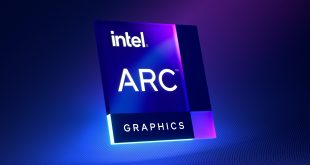Almost nothing affects your PC experience as much as the graphics procssor you choose, from integrated chips that come with the mainboard – through to running multiple high-end DX cards – KitGuru breaks this complex subject down into some very simple, practical advice.
So what are the main considerations? Do you play games or use graphic design programmes? What size of screen and resolution do you want to use ?
If you're not playing games or using a graphics applications, then integrated graphics should be fine. Your choices are GMA from Intel, GeForce from nVidia and Radeon HD from ATI. Right now, all three of these are pretty decent, so it's hard to make a mistake. Just check what outputs the mainboard has – compared to the connections of your screen.
Resolutions? Older, squarer screens typically run up to 1280×1024. That’s 1.3 million pixels to update for one frame in a game. Modern high-definition monitors can cost less than £150 and run at 1920×1080, which is over 1.7 million pixels. That’s a workload increase of almost 60%. This table shows you how many pixels need updates for each resolution:-
1,024 x 768 = 786,432 pixels to be updated
1,280 x 1,024 = 1,310,720
1,680 x 1,050 = 1,764,000
1,920 x 1,080 = 2,073,600
2,560 x 1,600 = 4,096,000
Entry level? If you're looking to play games from several years back, at newer games at low resolutions with the image quality turned down – then consider adding a graphic card for less than ~£50. Good choices include the ATI Radeon HD 5450 (DX11) and the nVidia 9500GT (DX10).
Mid-Range? If you're spending around £100, then you have some great choices available. With an nVidia GTS 250 (DX10) or Radeon HD 5750 (DX11), you can expect decent frame rates (over 30fps is playable) at 1920×1080 at high quality in games like FarCry 2 (32fps and 35fps respectively).
High-End? If you're spending around £300 on a card, then you probably have some specific preferences already. nVidia's GTX470 is a solid DX11 choice alongside the Radeon HD 5870. According to nVidia's figures, for most games the 5870 will be quicker – although the GTX470 has a lt more tessellation power available for newer games.
The other things you need to be aware of are (a) the length of the card (where it needs to fit inside your case) and (b) the power draw. If your power supply is weak, then it can cause system instability.
KitGuru uses a 1920×1080 screen for most games and feels that DX11 is a definite plus. On that basis, the Radeon HD 5770 at £130 is a great choice and, for added performance, you can always add a second card later if your mainboard supports CrossFire. As far as nVidia goes, we reserve judgement until the new mid-range DX11 cards come out. Right now, the fastest single GPU on the planet is nVidia's GTX 480 at £430 and the fastest single card is the Radeon HD 5970 at closer to £500.
KitGuru says… Dream on!
Where to buy…
 KitGuru KitGuru.net – Tech News | Hardware News | Hardware Reviews | IOS | Mobile | Gaming | Graphics Cards
KitGuru KitGuru.net – Tech News | Hardware News | Hardware Reviews | IOS | Mobile | Gaming | Graphics Cards


